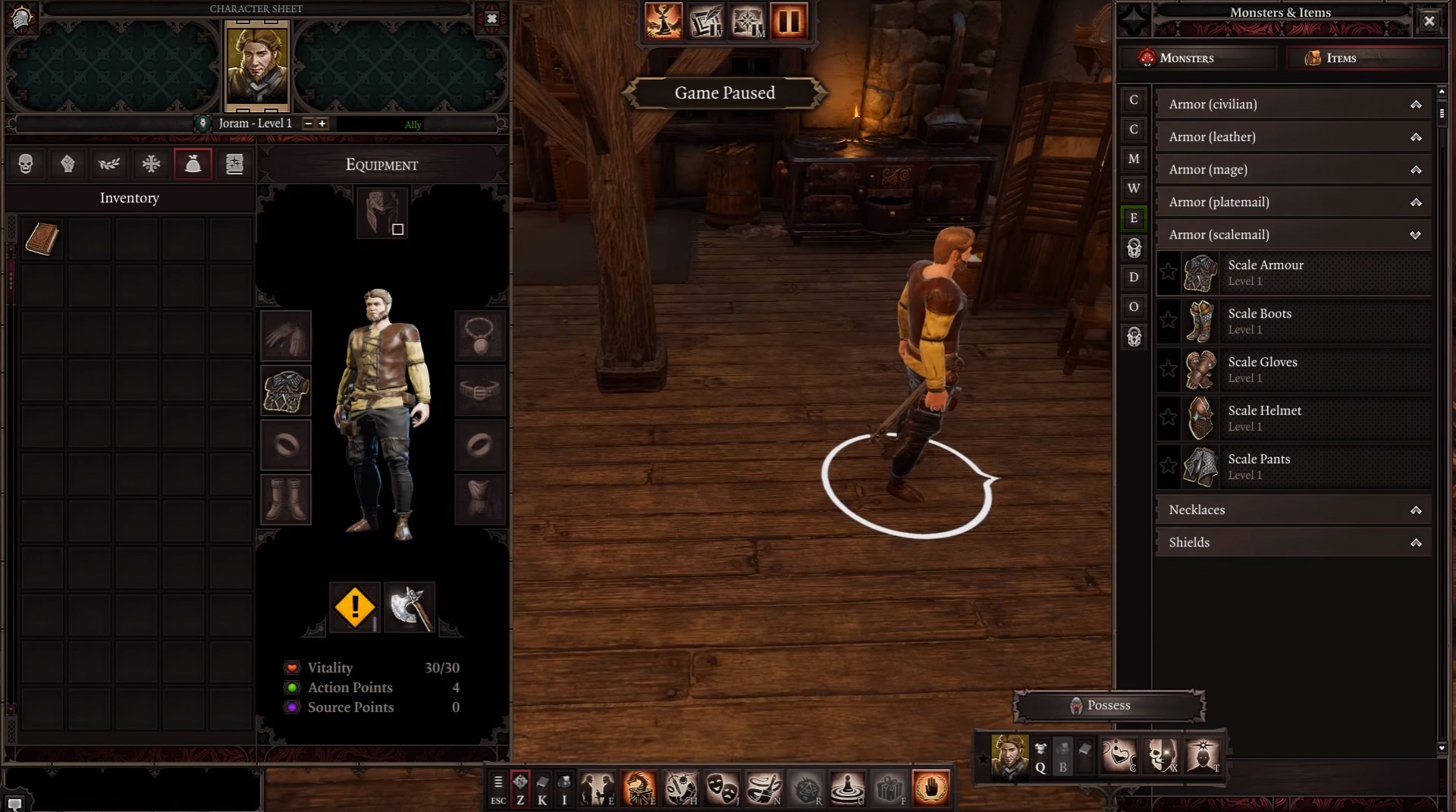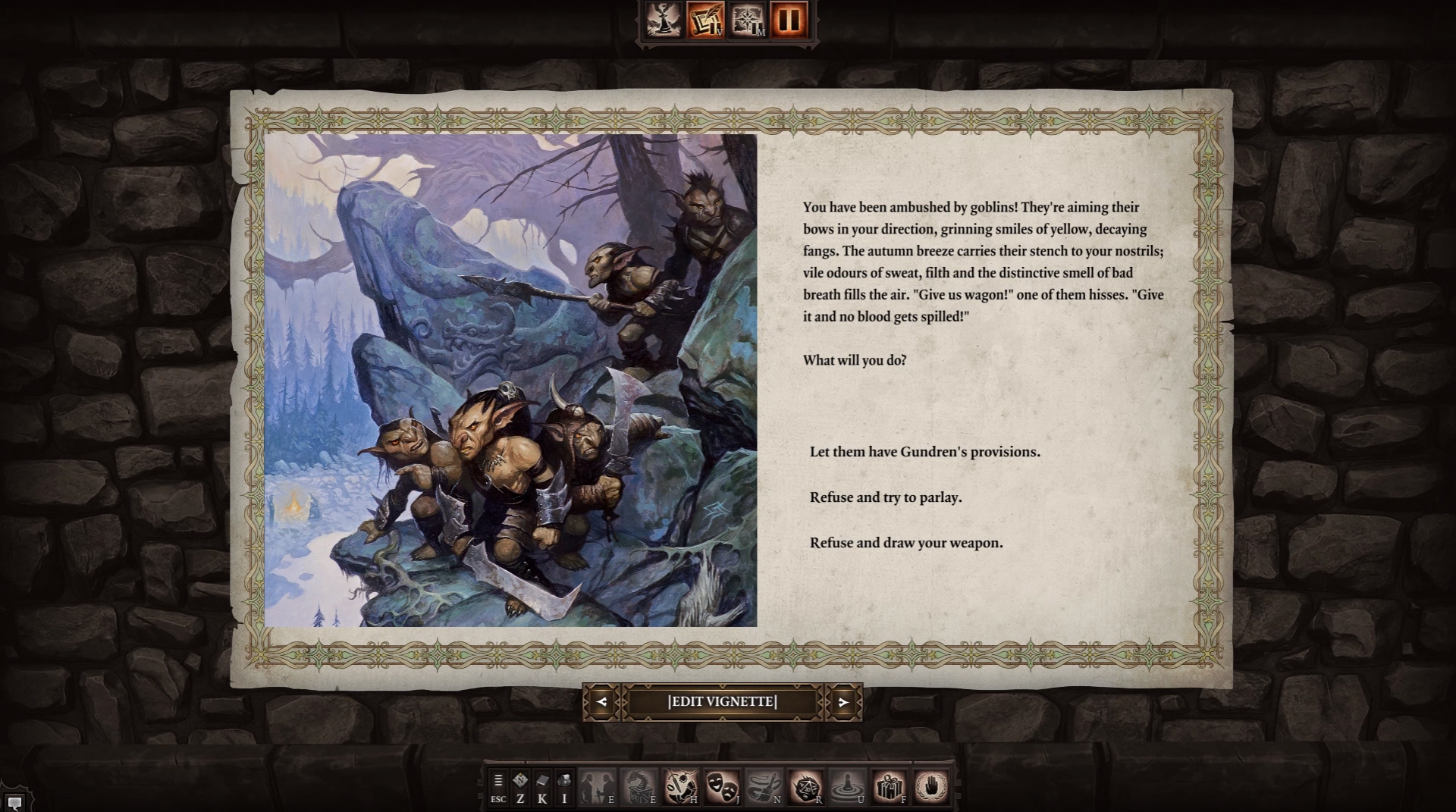The final stretch goal Divinity: Original Sin 2 offered during its very successful Kickstarter campaign last year was a Game Master mode. The pitch was ambitious: it would let people run pen-and-paper style Dungeons & Dragons campaigns within Divinity's engine. Wes and I got our hands on Game Master mode last week to play a campaign with developer Larian Studios, and we immediately made out with a dwarf, blew up a wolf, and turned a party member into a chicken. So, you know, regular D&D stuff. While it isn't a perfect marriage of the two game systems, it opens the door to a very cool new way to play D&D.
I also got a chance to sit down with Larian CEO Swen Vincke as he tried to recreate the opening of the studio's very first game, Divine Divinity, as a campaign in Divinity: Original Sin 2. You can watch the full video above as he walks through each feature step by step, and read on to hear my thoughts on the mode.
One way it absolutely succeeds is in giving the game master enough control to be spontaneous and responsive. Improvisation and unexpected scenarios are some of the best parts of playing D&D, and although Divinity 2's Game Master mode lets you extensively prepare campaigns in advance—even building full 3D environments with an included level editor—it also has the freedom for DMs (or, I suppose, GMs) to adapt on the fly and circumvent the game's programmed rules.

For example, at one point during our game, Wes decided to use a polymorph spell to turn one of our party members into a chicken, then hurl that chicken over a wall and behind some goblins for a sneak attack. This didn't technically work. The spell failed thanks to our party member's magic armor, and there's no action in Divinity 2 for throwing another character. But our GM was able to take control, overriding the polymorph outcome and then having Wes roll a digital D20 to test his throwing ability: he rolled a 19, and our GM magically moved the now-chicken ally to his new location.
This was probably the highlight of our brief campaign, but it was also a reminder that weren't actually playing Divinity; we were playing D&D and using Divinity as a visual tool to keep track of everything. At another point I blew up an oil barrel (a common Divinity occurrence), but our GM decided that blast had actually knocked those nearest to it far across the map, which was something that couldn't happen in the base game. In the middle of paused combat that distinction is less important, but wandering around and talking to other NPCs exposes how the cogs of these two game systems don't exactly line up.
You can't pre-write dialogue or script movement patterns for the NPC characters you place in the world, though the GM can take direct control of them, apply statuses like sleep (or chicken), and place items in their inventory. This greatly limits the freedom of how you interact with the world in a way that feels jarring if you approach it like a videogame RPG. Again, this is D&D grafted onto Divinity's combat system, not a tool for making complete standalone videogame campaigns.
The biggest gaming news, reviews and hardware deals
Keep up to date with the most important stories and the best deals, as picked by the PC Gamer team.

You'll always need your GM's attention to have a conversation or interact with an NPC, because that conversation will come from the mouth and mind of your GM. There's also something called the Vignette System that allows them to pre-write slides with text, an image, and possibly a multiple choice question for your party to vote on—all of which can be edited on the fly. A GM can use vignettes to pause the game and have the entire party make a decision or talk to an NPC together, but it's not the same as being able to talk to each NPC model in real time.
This made the world we played through feel small and lifeless compared to Divinity's campaign. That reliance on the GM is how D&D works, but when you can wander around the game world while waiting for a GM to tell you what's happening, story and player control don't quite align. Divinity 2 is a game designed to allow multi-tasking, while D&D is the polar opposite. That tension isn't insurmountable with an organized party, but it's definitely there. On the bright side, vignettes do give a nice visual representation to major story beats and party decisions that you wouldn't get in a typical pen-and-paper campaign.
From what we've played, Divinity 2's combat system is still great: a refined version of the free-form, tactically dense combat in the first game. And the tools available on the backend of the Game Master mode are robust. I can't wait to see the custom campaigns and maps that start popping up in the Steam Workshop. Game Master mode is expected to arrive when Divinity: Original Sin 2 leaves Early Access later this year.


